
Dancewear is clothing commonly worn by dancers. Items of dancewear include:

Dancewear is clothing commonly worn by dancers. Items of dancewear include:

Irish dance refers to a group of traditional dance forms originating from Ireland, encompassing dancing both solo and in groups, and dancing for social, competitive, and performance purposes. Irish dance in its current form developed from various influences such as earlier native Irish dance, English country dancing and later possibly French quadrilles, as it became popular in Britain and Ireland during the 19th century. Dance was taught by "travelling dance masters" across Ireland in the 17th and 18th centuries, and separate dance forms developed according to regional practice and differing purposes. Irish dance became a significant part of Irish culture, particularly for Irish nationalist movements. From the early 20th century, a number of organisations promoted and codified the various forms of dance, creating competitive structures and standardised styles. Irish dancers who compete for competitive reasons dance in a dance style that is more modern than traditional Irish dance. It is mainly done solo, but there is some team dancing in groups of 2, 3, 4, 6, 8, 10, 16 and even numbers onwards. Competitive Irish dancers wear dresses heavily crystalled in Swarvoski and beam on stage. Competitive Irish dancers may also wear large wigs and stage makeup.

Tap dance is a form of dance characterized by using the sounds of tap shoes striking the floor as a form of percussion. Two major variations on tap dance exist: rhythm (jazz) tap and Broadway tap. Broadway tap focuses on dance; it is widely performed in musical theater. Rhythm tap focuses on musicality, and practitioners consider themselves to be a part of the jazz tradition.
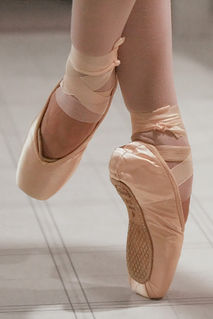
A pointe shoe ; is a type of shoe worn by ballet dancers when performing pointe work. Pointe shoes were conceived in response to the desire for dancers to appear weightless and sylph-like and have evolved to enable dancers to dance en pointe for extended periods of time. They are manufactured in a variety of colors, most commonly in shades of light pink.
This is an alphabetical index of articles related to dance.
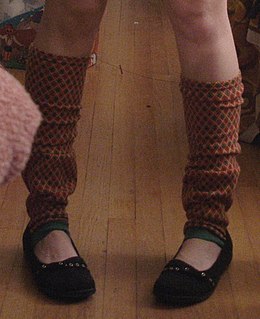
Leg warmers are coverings for the lower legs, similar to socks but thicker and generally footless. Leg warmers are worn to keep the lower legs warm in colder weather. They can be tubular sleeves, long fabric wrappings, or simple pieces of fur or fabric tied around the calves. They are used in several outdoor activities and sports including cycling, soccer, hockey, hiking, ice skating, and dance.

Pointe technique is the part of classical ballet technique that concerns pointe work, in which a ballet dancer supports all body weight on the tips of fully extended feet within pointe shoes. A dancer is said to be en pointe when the dancer's body is supported in this manner, and a fully extended vertical foot is said to be en pointe when touching the floor, even when not bearing weight. Pointe work is performed while wearing pointe shoes, which employ structural reinforcing to distribute the dancer's weight load throughout the foot, thus reducing the load on the toes enough to enable the dancer to support all body weight on fully vertical feet.

The tutu is a dress worn as a costume in a classical ballet performance, often with attached bodice. It may be made of tarlatan, muslin, silk, tulle, gauze, or nylon. Modern tutus have two basic types: the Romantic tutu is soft and bell-shaped, reaching the calf or ankle; the Classical tutu is short and stiff, projecting horizontally from the waist and hip.
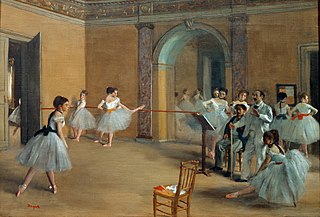
Classical ballet is any of the traditional, formal styles of ballet that exclusively employ classical ballet technique. It is known for its aesthetics and rigorous technique, its flowing, precise movements, and its ethereal qualities.
Paul Killick is a British professional ballroom dancer and an International Latin American Dance Champion. He appeared in the first two series of the television show Strictly Come Dancing. Killick specialises in Latin dance and has won international titles including The World Cup, World Trophy, World Masters, World Series, Universal and British Professional Latin American DanceSport Championships.
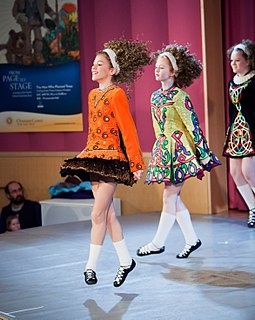
Irish stepdance is a style of performance dance with its roots in traditional Irish dance. It is generally characterized by a stiff upper body and fast and precise movements of the feet. It can be performed solo or in groups. Aside from public dance performances, there are also stepdance competitions all over the world. These competitions are often called Feiseanna. In Irish dance culture, a Feis is a traditional Gaelic arts and culture festival. Costumes are considered important for stage presence in competition and performance Irish stepdance. In many cases, costumes are sold at high prices and can even be custom made. Males and females can both perform Irish stepdance but for the most part in today's society, the dance remains predominantly female. This means that the costumes are mainly dresses. Each dress is different, with varying colors and patterns, designed to attract the judge's eye in competitions and the audience's eye in performance. General appearance beside the costume is also equally important. Dancers would typically curl their hair before each competition. Many dancers invest in curled wigs that match their hair color. Poodle Socks are worn with the dresses and shoes. These are white socks that stretch to mid-calf with distinctive ribbing.

Freed of London Ltd, often referred to simply as Freed, is a designer and manufacturer of pointe shoes and other dance shoes. The company additionally manufactures dance apparel, bridal, and fashion collections. Freed of London shoes are handcrafted in the UK and today the brand is available in over 50 countries. While Freed began in a basement in Covent Garden, it now comprises nine retail stores, seven offices, five warehouses, and three manufacturing sites.
Patti Rutland is an American choreographer and the artistic director of Patti Rutland Jazz, a contemporary jazz dance and hip hop dance company based in Dothan, AL.

Pineapple Dance Studios, commonly known as Pineapple Studios or simply Pineapple, is a dance studio complex, performing arts school, and associated dancewear, clothing, and eyewear brand, based in London, England.

Bloch is an Australian-based manufacturer of pointe shoes and other types of dance shoes, dance costumes, and dance fashion accessories.
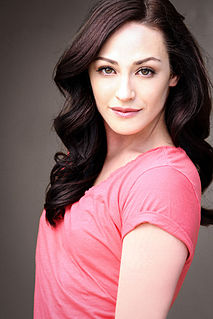
Haylee Ruth Roderick is an American dancer, model, and actress.

Ben Sommers (1906-1985) was a leading philanthropic figure in the world of dance, and president of the Capezio dance and theatre shoe company from 1940 to his death. He established the Capezio Foundation in 1951, which focused on dance, especially the regional ballet movement. In 1957, he founded the Capezio Awards which recognise the lifetime achievements of those in dance, including Martha Graham, Jerome Robbins, Alvin Ailey and Agnes de Mille. Sommers was also founder of the Association of American Dance Companies. In 1978, the same year he managed to persuade the United States Postal Service to issue stamps commemorating dance, he established National Dance Week, followed by International Dance Week in 1985.
Yumiko Takeshima is a Japanese designer and former Principal dancer with Semperoper Ballett, Universal Ballet, the Alberta Ballet Company, Feld Ballet, and the Dutch National Ballet. Born in Asahikawa, Hokkaido, Takeshima began dancing at the age of four in Sapporo. At the age of thirteen, she studied at the San Francisco Ballet School in the United States. Takeshima continued to dance throughout the 90s and early 2000s and started designing dancewear and costumes for ballet companies from all over the world.
Brynn Adela Rumfallo is an American dancer. She rose to fame in 2013 as a contestant on the eighth season of America's Got Talent. She later garnered attention for her contemporary dance styles and winning national and regional competitions. In 2015, she first appeared on the Lifetime reality series, Dance Moms and became a permanent cast member of the elite team in 2016, before leaving in 2017 after appearing in three seasons.
Alby Sabrina Pretto is an Italian ballet dancer and fashion designer. She was formerly a soloist with Les Ballets Trockadero de Monte Carlo, an all-male ballet company, but left after coming out as a transgender woman. She was previously a company member with Stadtheater Koblenz and Les Ballets Grandiva, and danced as a guest artist with English National Ballet and Fondazione Arena of Verona. Pretto was a finalist in an international shoe design contest in 2000, organized by Sammauro Industria, and launched a dancewear line called Albypretty.
Nia Faith Betty is a Canadian activist, fashion designer, and the co-founder of Révolutionnaire, a digital social network for changemakers and a clothing line to celebrate diversity.